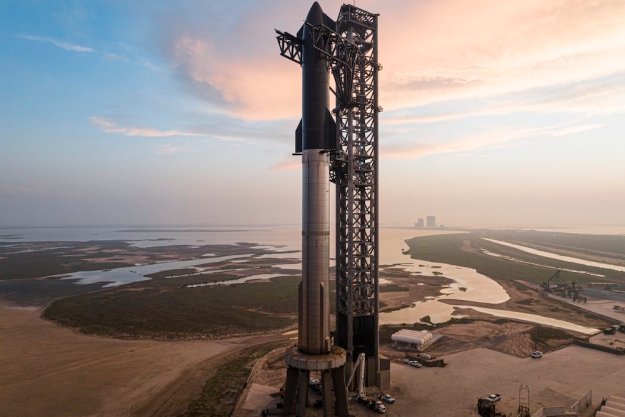Fans of slow TV are in for a treat tonight when NASA begins rolling its next-generation moon rocket to the launchpad for testing ahead of a lunar mission in the coming months.
A giant low-slung transporter will carry the 332-feet (98.1-meter) Space Launch System (SLS) rocket and Orion spacecraft along the four-mile route from the Kennedy Space Center’s Vehicle Assembly Building to the launchpad. Traveling no faster than 1 mph, the process is expected to take between 8 and 12 hours.
The new lunar rocket and spacecraft were first rolled to the launchpad in March. But the subsequent wet dress rehearsal, which involved filling the rocket’s tanks with fuel and performing a mock countdown, surfaced a number of technical issues that forced engineers to return the rocket to the Vehicle Assembly Building for repairs.
Those issues have now been fixed, paving the way for the rocket’s return to the launchpad. A second attempt at the wet dress rehearsal is expected to begin in about two weeks’ time.

How to watch
NASA is livestreaming the entirety of the rocket’s journey to the launchpad. The SLS and Orion spacecraft are scheduled to emerge from the Vehicle Assembly Building at 12:01 a.m. ET on Monday, June 6 (9:01 p.m. PT on Sunday).
You can watch the livestream by using the video player embedded at the top of this page or by heading to NASA’s website, which will show the same footage. If you’d prefer to see the rocket in daylight, then be sure to fire up the player when you wake up on Monday morning, at which point the rocket should be close to reaching the launchpad.
Assuming the wet dress rehearsal goes to plan this time around, NASA will send the SLS rocket and Orion spacecraft on an uncrewed flyby of the moon in the Artemis I mission in what will be the system’s first full flight test. No date has been set for the mission, but the hope is that it will get underway in the next few months.
Following that, NASA will launch Artemis II, which will send the rocket and spacecraft on the same path but this time with a crew on board.
If that mission proceeds without any major hitches, Artemis III will use SLS and Orion to put the first woman and first person of color on the lunar surface in the first crewed moon landing since the last Apollo flight in 1972. Artemis III is currently scheduled to take place no earlier than 2025.
Editors' Recommendations
- Watch how NASA plans to land a car-sized drone on Titan
- SpaceX’s Crew-8 head to launchpad for ride to space
- How to watch NASA launch its newest ocean and atmosphere observation satellite tonight
- Five rocket launches to look out for in 2024
- How to watch the first U.S. commercial moon mission launch tonight


